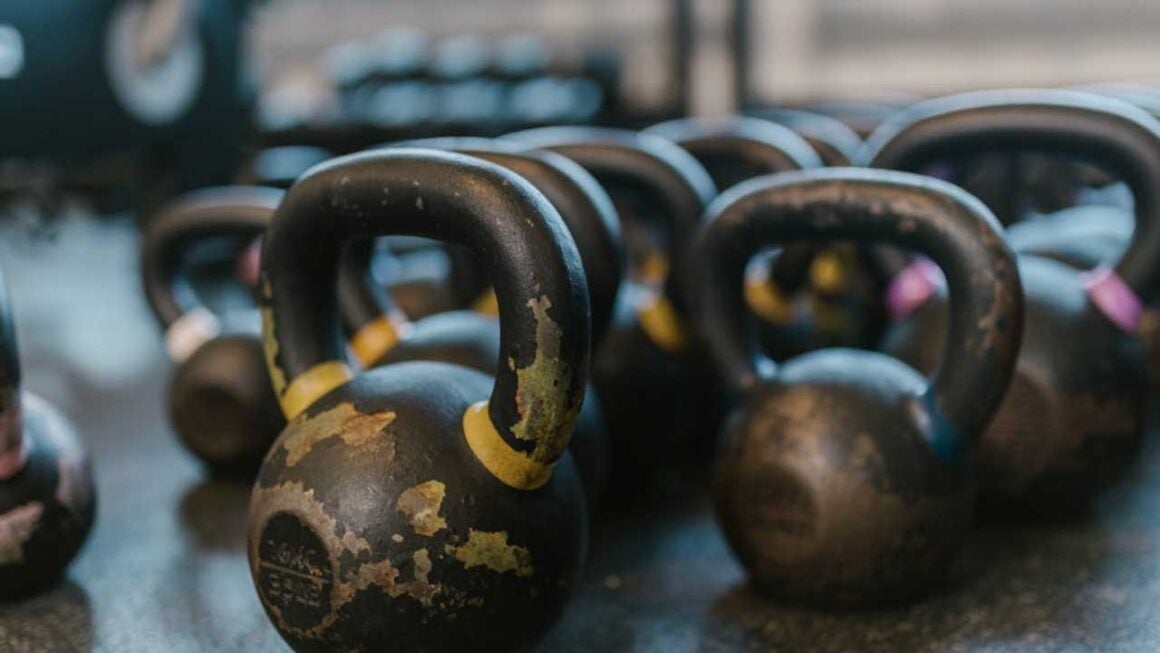Kettlebells have become a staple in modern fitness routines. They offer a dynamic and efficient way to build strength, improve endurance, and enhance mobility. But can they truly replace a traditional full-body workout? Today, let’s examine the evidence, breaking down how kettlebell workouts stack up in terms of strength, cardiovascular fitness, and more.
Do Kettlebells Provide a Complete Workout?
Yes. Kettlebell training can provide a full-body workout. The unique design, with weight positioned below the handle, makes kettlebells ideal for ballistic and compound movements that engage multiple muscle groups [1] while also elevating the heart rate.
According to a comprehensive article review from PubMed Central about Kettlebell training [2], “they are a great tool for full‑body, ballistic exercises that require strong muscles, which means that Kettlebells may help with respiratory and cardiovascular fitness as well as muscle strength.”
Additionally, kettlebells mimic high‑intensity interval training: swings and circuits can drive heart rates to at least 76% of HR max, a range associated with cardio benefits [3]. As such, for those building a home gym, kettlebells are also compact and cost-effective, making them a smart addition to your setup. You can find a wide range of kettlebells and other gym equipment at Fitness Avenue, which offers options for all fitness levels and space requirements.
Why Kettlebells Are Great for Full-Body Fitness
Strength and Power
Studies have shown that kettlebell training significantly boosts strength and power. One investigation reported a 4.2% increase in power clean performance and improvements in vertical jump, although these results were slightly behind those of traditional resistance training, which still affirms the effectiveness of kettlebell training. Moreover, a review indicated kettlebell workouts enhance maximum strength (1RM/3RM) and explosive power [4]
Cardiovascular and Metabolic Conditioning
In addition to strength, kettlebell workouts provide notable cardiovascular benefits. Longer circuits and interval-based workouts elevate heart rate in ways comparable to HIIT or sprint cycling protocols. A study by the American Council on Exercise (ACE) demonstrated significant improvements in aerobic capacity, core strength, and dynamic balance after kettlebell training [5].
Further, metabolic conditioning is achieved through continuous or interval-style kettlebell sessions. For instance, 20 minutes of snatching with brief rest periods can lead to improved aerobic power and fat-burning efficiency [6].
Functional Movement and Core Engagement
Kettlebell workouts naturally develop functional movement patterns, lifting, twisting, swinging, that mirror everyday activities. Functional training, which emphasizes holistic movement over isolation, is widely recognized in exercise science. Kettlebells, by design, encourage core engagement and balance.
Their unstable centre of mass forces users to stabilize throughout swings, cleans, and presses. As Women’s Health reports, “This type of training program leads to benefits, even in individuals starting at an older age.” These findings suggest kettlebells are beneficial not just for athletes, but for anyone seeking improved longevity and daily function [7].
Adaptability Across Populations
Whether for younger athletes or older adults, kettlebell training scales effectively. A 2024 study involving individuals aged 60–80, who trained twice weekly for 12 months, found gains in muscle mass, grip strength, functional ability, and reductions in inflammation [8]. Another report highlights benefits even for those who are untrained, helping to reduce inflammation and bolster muscle in older demographics [9].
Key Tips for Safe and Effective Kettlebell Workouts
- Learn Proper Form: The ballistic nature and off-center weight demand precise technique, especially for swings, get‑ups, and snatches. Beginners who want to use kettlebells as their first gym equipment workout should seek qualified instruction.
- Start Light: Begin with lighter weights to focus on form and gradually increase the weight.
- Follow Progressive Overload: Increase volume, complexity, or load over time to stimulate continued adaptation
- Include Rest and Recovery: Alternate high‑intensity kettlebell workouts with low-intensity or rest days to support recovery.
- Tailor to Individual Needs: Adjust weight, reps, and frequency based on age, fitness goals, or limitations.
Final Thoughts
Yes, you can get a full workout with kettlebells. From building strength to improving mobility and conditioning, kettlebells serve as a flexible solution for varied workout programs. No matter the setting—home, gym, or outdoors—a single kettlebell offers a complete and efficient training option.
Citations:
[1] https://www.businessinsider.com/how-to-use-kettlebells-build-muscle-boost-cardio-athlete-tips-2024-7 [2] https://pmc.ncbi.nlm.nih.gov/articles/PMC10910645/ [3] https://www.researchgate.net/publication/303540100_Cardiovascular_and_Metabolic_Demads_of_the_Kettlebell_Swing_using_Tabata_Interval_versus_a_Traditional_Resistance_Protocol [4] https://journals.lww.com/nsca-jscr/fulltext/2012/08000/kettlebell_swing_training_improves_maximal_and.28.aspx [5] https://www.acefitness.org/certifiednewsarticle/3172/ace-sponsored-research-study-kettlebells-kick-butt/ [6] https://pmc.ncbi.nlm.nih.gov/articles/PMC6458586/ [7] https://www.womenshealthmag.com/fitness/a62989067/kettlebell-training-aging-study/ [8] https://www.health.com/kettlebell-training-build-muscle-reduce-inflammation-8762256 [9] https://www.physiology.org/detail/news/2024/11/21/kettlebell-training-may-help-maintain-muscle-strength-in-older-adults

